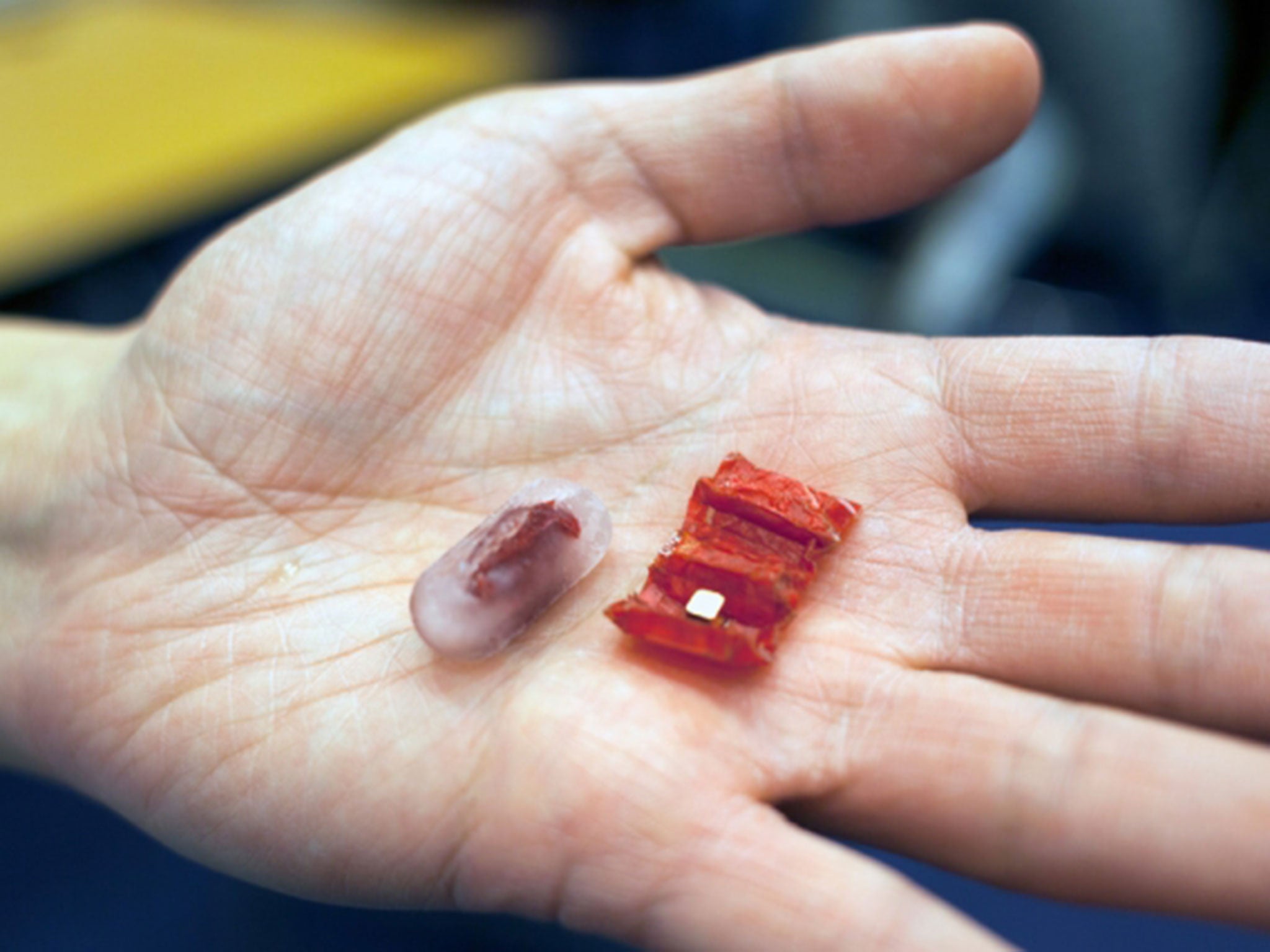Little 'origami robot' designed to remove objects you've accidentally swallowed developed at MIT
The robot could one day be used to patch up wounds inside the stomach, or deliver targeted medicines

A joint team of American and British scientists have developed a tiny 'origami robot', which can be swallowed and used to remove foreign objects from the stomach.
The robot, created by researchers from the Massachusetts Institute of Technology (MIT), the University of Sheffield and the Tokyo Institute of Technology, is small enough to fit inside an ordinary gel capsule.
Once inside the stomach, the robot's origami structure unfolds, allowing doctors to move it around from outside the patient's body with magnets.
It isn't a robot in the conventional sense. Rather than being made of moving parts and electronics, it's simply a folded sheet of thin paper-like material, mostly made up of dried pig intestine.
The robot's two outer layers sandwich a material which shrinks when heated by the body. A pattern of folds and slits in the robot controls this shrinkage, allowing it to fold up like an accordion and inch its way around the stomach.
Further control comes from its 'stick-slip' motion, in which it sticks to a surface when moving, but slips free again when changing direction. Tiny flippers on its body also allow it to swim around in the liquid-filled stomach.
The researchers believe one of the robot's most useful applications is retrieving swallowed button batteries from the stomach. These batteries can be digested normally, but if they come into prolonged contact with the stomach lining, they can create an electric current which produces caustic soda, a substance often used in drain cleaners.
Once lodged in place, the battery can burn through the stomach lining, causing horrific injuries which require intrusive operations to fix.
The MIT team believe they could use the robot to retrieve a battery from a patient's stomach lining before it causes damage, helping the 3,500 Americans who swallow the batteries every year.
In future, the team hope to use the robots to patch up wounds in the stomach, or deliver medicines to specific parts of the body.
Origami robots were first developed at MIT in 2010, but their medical applications have only been explored recently.
"It's really exciting to see our small origami robots doing something with potential important applications to healthcare," said Daniela Rus, who led the research group.
"For applications inside the body, we need a small, controllable, untethered robot system. It's really difficult to control and place a robot inside the body if the robot is attached to a tether," she said.
Bradley Nelson, from Zurich's Federal Institute of Technology, called it "one of the most convincing applications of origami robots that I have seen."
Join our commenting forum
Join thought-provoking conversations, follow other Independent readers and see their replies
Comments
Bookmark popover
Removed from bookmarks